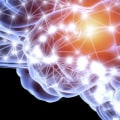Autism spectrum disorder (ASD) is a complex neurological condition that affects brain development. It is characterized by difficulties in social communication, restricted and repetitive behaviors, and organizational and planning problems. The DSM-5 is the standard reference used by healthcare providers to diagnose mental and behavioral conditions, including autism. There are five main types of autism, including Asperger's syndrome, Rett syndrome, childhood disintegrative disorder, Kanner syndrome, and pervasive developmental disorder not otherwise specified (PDD-NOS).Symptoms of autism must be present in the early development period, but may not fully manifest themselves until social demands exceed limited capacities or may be masked by strategies learned in later life.
These alterations are not better explained by intellectual disability (intellectual development disorder) or global developmental delay. Intellectual disability and autism spectrum disorder often coexist; to make comorbid diagnoses of autism spectrum disorder and intellectual disability, social communication must be below what is expected for the overall developmental level. The American Psychiatric Association publishes the Diagnostic and Statistical Manual of Mental Disorders (DSM) to guide health professionals in diagnosing mental health conditions. Until recently, experts talked about different types of autism, such as autistic disorder, Asperger's syndrome, and PDD-NOS. However, the government and other program providers may choose to rediagnose their beneficiaries under the new definition to determine if they are still considered to be living with autism for services.
Four previously separate categories of autism were consolidated into a general diagnosis of “autism spectrum disorder”.People with autistic disorder often have significant language delays, social and communication challenges, and unusual behaviors and interests. Many people with autistic disorder also have intellectual disabilities. People with Asperger's syndrome often have milder symptoms of autistic disorder. They may have social challenges and unusual behaviors and interests.
However, they usually have no problems with language or intellectual disability. People who meet some, but not all, of the criteria for autistic disorder or Asperger's syndrome may be diagnosed with atypical autism. These people usually have fewer symptoms and are milder than people with autistic disorder. Symptoms can cause only social and communication challenges. The Autism Society has launched a new brand developed with the autism community, representing the diverse experiences and needs across the autism spectrum. Creation of a new diagnosis of social communication disorder was included for disabilities in social communication without repetitive and restricted behaviors. Autism can be difficult to diagnose because there is no medical test, such as a blood test, to do so.
Healthcare providers can still indicate a diagnosis of Asperger's syndrome (or another previously used category of autism) in a patient's medical record, along with the current coding of DSM-5 for “autism spectrum disorder”.Those who worked at the DSM-5 repeated many times that no one who has already had a diagnosis of autism will be affected by these changes. Read the full text of the DSM-5 criteria for autism spectrum disorder and social communication disorder. Our Autism Response Team (ART) is specially trained to connect people with autism, their families, and caregivers with information, tools, and resources.





Leave a Comment